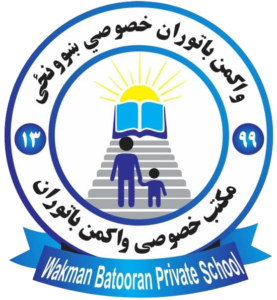In today’s fast-paced and ever-evolving world, education is no longer just about memorizing facts or acing exams. It’s about unlocking the unique potential within every student, empowering them to thrive academically, personally, and professionally. The journey to academic and personal success is not a one-size-fits-all approach; it requires a holistic understanding of each student’s strengths, passions, and challenges. So, how can we, as educators, parents, and mentors, help students unlock their full potential? Let’s explore the key steps on this transformative path.
1. Recognize Individuality: Every Student is Unique
The first step in unlocking student potential is acknowledging that no two students are the same. Each individual brings a unique set of talents, interests, and learning styles to the table. Some students excel in creative thinking, while others thrive in logical problem-solving. Some are visual learners, while others prefer hands-on experiences.
By recognizing and celebrating these differences, we can create personalized learning experiences that cater to each student’s needs. This might involve differentiated instruction, project-based learning, or even integrating technology to adapt to diverse learning styles. When students feel seen and understood, they are more likely to engage and excel.
2. Foster a Growth Mindset
Carol Dweck’s concept of the growth mindset has revolutionized the way we think about learning and potential. A growth mindset is the belief that abilities and intelligence can be developed through effort, practice, and perseverance. In contrast, a fixed mindset assumes that talent and intelligence are static traits.
To unlock student potential, we must encourage a growth mindset. This means praising effort over innate ability, reframing failures as learning opportunities, and teaching students to embrace challenges. When students believe they can improve, they are more likely to take risks, persist through difficulties, and achieve their goals.
3. Create a Supportive Environment
A nurturing and supportive environment is essential for students to thrive. This includes both the physical classroom setting and the emotional climate. Students need to feel safe, valued, and respected to take risks and express themselves authentically.
Teachers and parents play a critical role in building this environment. Active listening, empathy, and constructive feedback can go a long way in boosting a student’s confidence and motivation. Additionally, fostering collaboration and peer support can help students learn from one another and build a sense of community.
4. Encourage Curiosity and Passion
True learning happens when students are curious and passionate about what they’re studying. Instead of focusing solely on grades or test scores, we should encourage students to explore their interests and ask questions. What excites them? What problems do they want to solve? What kind of impact do they want to make in the world?
By integrating real-world applications, interdisciplinary projects, and opportunities for self-directed learning, we can ignite students’ curiosity and help them connect their education to their passions. This not only enhances academic performance but also prepares them for lifelong learning and success.
5. Teach Essential Life Skills
Academic success is just one piece of the puzzle. To truly unlock student potential, we must also equip them with essential life skills such as critical thinking, communication, time management, and emotional intelligence. These skills are crucial for navigating the complexities of the modern world and achieving personal fulfillment.
Incorporating social-emotional learning (SEL) into the curriculum can help students develop self-awareness, empathy, and resilience. Additionally, providing opportunities for leadership, teamwork, and problem-solving can prepare students for the challenges they’ll face beyond the classroom.
6. Embrace Technology and Innovation
Technology has transformed the way we learn and teach. From online resources to interactive tools, technology can provide students with personalized learning experiences and access to a wealth of knowledge. Platforms like virtual labs, coding programs, and AI-driven tutoring systems can help students explore new fields and develop 21st-century skills.
However, it’s important to strike a balance. While technology can enhance learning, it should not replace the human connection and mentorship that are essential for student growth.
7. Celebrate Progress, Not Just Perfection
Finally, unlocking student potential is about celebrating progress, not just perfection. Success is not a destination but a journey. By acknowledging small wins and incremental improvements, we can motivate students to keep pushing forward.
This also means redefining what success looks like. For some students, success might mean improving their grades; for others, it could be overcoming a fear of public speaking or discovering a new passion. By broadening our definition of success, we can help every student feel accomplished and valued.
Conclusion: The Ripple Effect of Unlocking Potential
When we invest in unlocking student potential, the benefits extend far beyond the individual. Empowered students become confident, capable, and compassionate individuals who contribute positively to their communities and the world. They are better equipped to face challenges, pursue their dreams, and make a meaningful impact.
As educators, parents, and mentors, we have the power to guide students on this transformative journey. By recognizing their individuality, fostering a growth mindset, and creating a supportive environment, we can help them unlock their full potential and pave the way for academic and personal success.
Let’s commit to nurturing the next generation of thinkers, innovators, and leaders. After all, the future belongs to those who believe in the beauty of their dreams—and have the tools to achieve them.
What steps have you taken to unlock student potential? Share your thoughts and experiences in the comments below! Let’s continue the conversation and inspire one another to make a difference in the lives of students everywhere.
